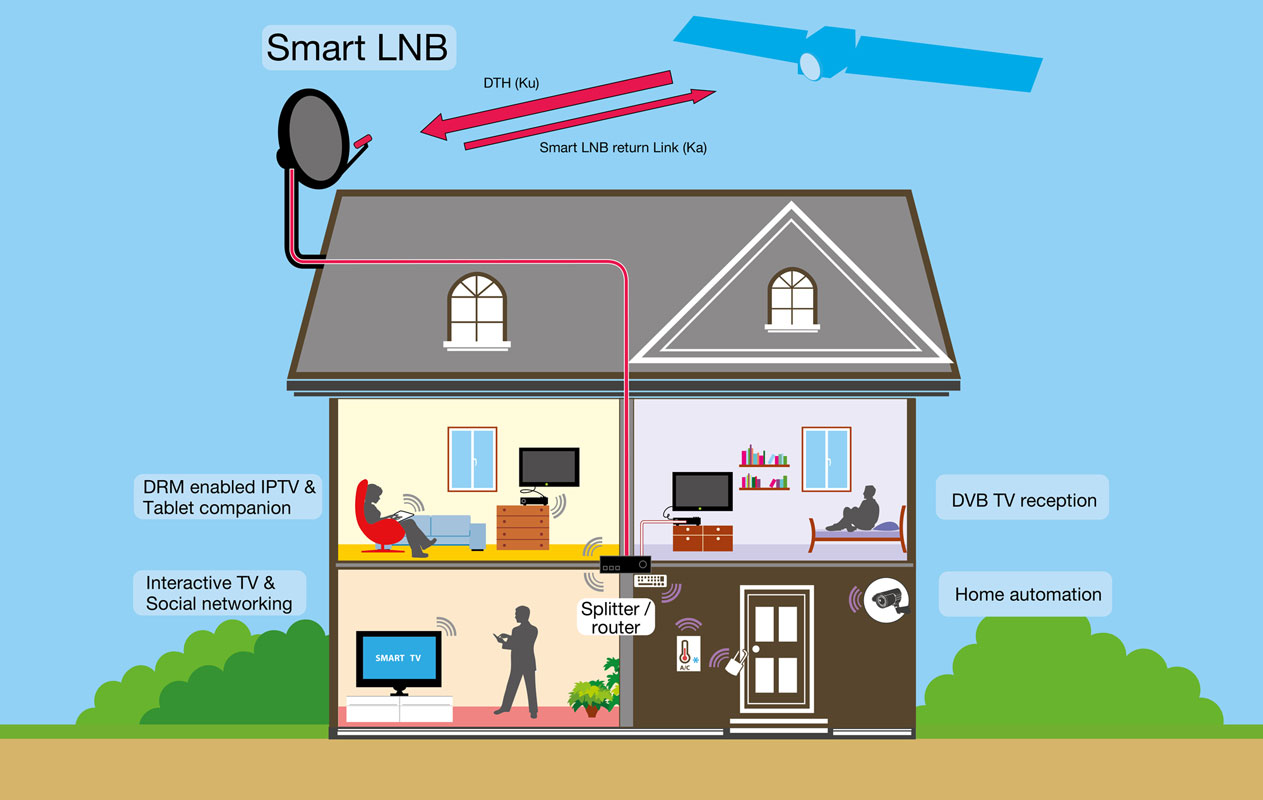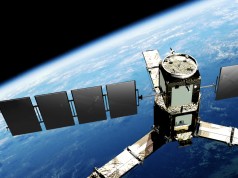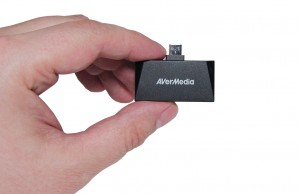Do you know what Smart LNB is? Yes, you might have heard about it but there are still very few people today who know definitely how it works, and obviously they are engaged in workout of this project. Antonio Arcidiacono, Eutelsat Director of Innovation, is one of them. Eutelsat is going to be the first satellite company to provide Smart LNB for mass customers. How will they do it? This was what we were talking about in Eutelsat office in Paris.
What commercial perspectives will Smart LNB provide?
We plan to work in three different markets. The first one is the Connected TV market, all the services you can access via the Internet but entirely via satellite: VOD, interactive services, social networks, audience measurement, IP-streaming, data exchange, etc. The second one is the Machine-to-Machine and Internet of Things market. The third market is Internet access for unserved areas. There are four billion people in the world who still don’t have access to the Internet and we believe satellite is a key solution to reach them. The Smart LNB is the result of an ambitious development project; the vision being that in 5 to 10 years new satellite antennas will be systematically equipped with a Smart LNB. The intention is for the cost of the Smart LNB when produced in millions of units will not exceed the $40 threshold. Depending on the different applications for the Smart LNB you can distribute IP content at 10’s of MBPS/transponder and interact directly via satellite at speeds up to 160 kbps per terminal. In this way you can connect hundreds of millions customers via satellite for Connected TV applications but also for low cost Internet access and may be billions of sensors for machine-to-machine. The Smart LNB is the enabler to develop via satellite all those markets: Connected TV, Machine-to-Machine and low cost access to internet.
Does Eutelsat improve it alone or the company works in cooperation with any other partners?
We have a certain number of patents supporting the Smart LNB concept and development. We have also cooperated with the European Space Agency (ESA) and have been working with the German Space Agency (DLR) and the Fraunhofer Institute in Germany. On the industrial side, we work together with different companies in Spain, Israel, Switzerland, Italy and France. These companies are providing us with the different bricks to develop the system and the related applications. For mass production it is most likely we will work with companies from Europe and the Far East. This approach will be necessary for mass production and to reach low production costs.
How much lower?
Here is an example to give you an idea. For 500 000 Smart LNBs, I’ll receive proposals from companies who may produce them in Western Europe, but also in Central and Eastern Europe, For a limited number of units , let’s say from few thousands it could make sense to produce them in Western Europe. The cost of manufacturing and testing in that case will be relatively high. If I want to produce from the 100’s of thousands to millions, production costs in Central/Eastern Europe or the Far East will be lower. With a substantial cost difference in the order of several dollars per unit.
We are working on the device that can work in any connected object and trying to make its price reasonable. We need to reduce the price, through components integration and mass production to reach costs that are appropriate for the consumer market.
What is the status of the project?
We are working on single chip integration for the Smart LNB. It will be the second generation of Smart LNB – it’s supposed to be only one main chip inside, with an integration that can be automatically produced with a limited number of components, and so you will have a lower cost to test equipment. When the single chip integration is achieved, it will be much easier to engage in mass production.
We have received proposals from three vendors to demonstrate the device to our customers in different markets and are starting pilots with customers. In parallel we are working on the conditions for real mass-production.
When can you expect the commercial launch?
We expect this will be in 2016. It depends a lot on our partners such as Pay TV platforms, service providers, broadcasters, when they will be ready and adopt this new opportunity and on allocation of satellite capacity.
Are there any marketing prognoses already?
We are always in b-to-b customer exercise, we are today in discussion with our main customers, studying and working out what services can be provided, working towards a direct demonstration to end users.
This kind of product is unique. We are the first company to launch it. I’m confident that it will attract our traditional customers (Pay-TV operators and broadcasters) as well as service providers venturing into the vast market of connected devices.
What you need to know about Smart LNB
The ‘smart LNB’ provides a bidirectional narrowband channel on top of normal DTH reception in Ku-band. The return link can be in Ka-band, C-band or Ku-band, depending on the model.
A typical installation for interactive TV services is composed of:
– A satellite dish
– The ‘smart LNB’ feed with coaxial output
– The interactive set-top box (STB)/In-Door-Unit (IDU) that splits the video signal to the legacy TV or STB and the IP signal to the local network.
The ‘smart LNB’ takes advantage of the Ethernet over Coax: in existing installations the user does not need to replace the cabling. For greenfield installations, or for applications not based on DTH, an Ethernet connection between the antenna and the IDU is also possible.
The interactive STB/IDU makes use of standard protocols (DVB, IP..) and is thus compatible with any standard user equipment. In the future, it might be integrated directly inside home-gateways and STB.
The ‘smart LNB’ is optimised for bursts and message-type traffic on the return link; the transmission protocol, provides modulation and asynchronous access scheme with very high spectrum efficiency.
Operators may serve a wide population of terminals with cost-effective satellite bandwidth.


















